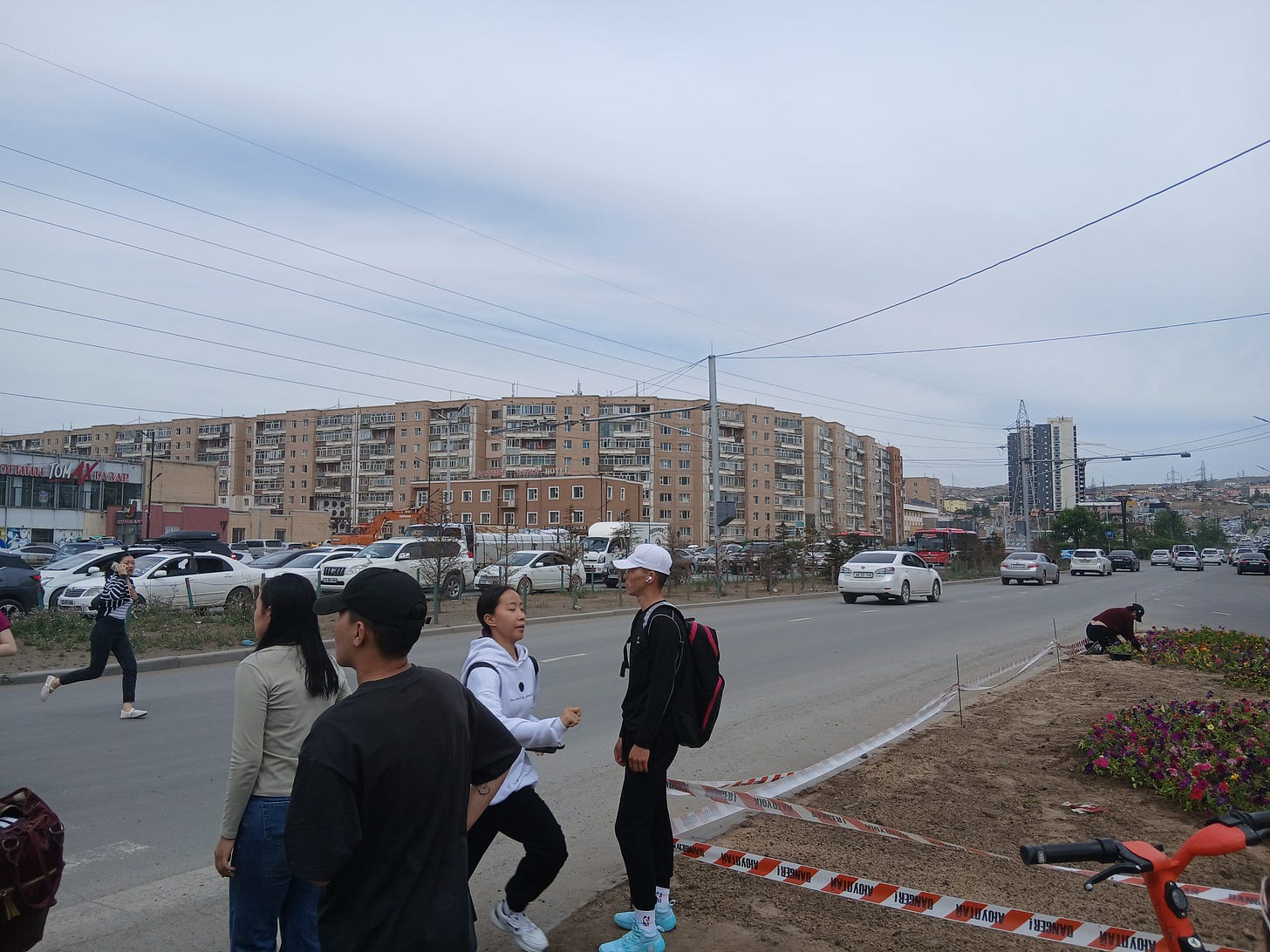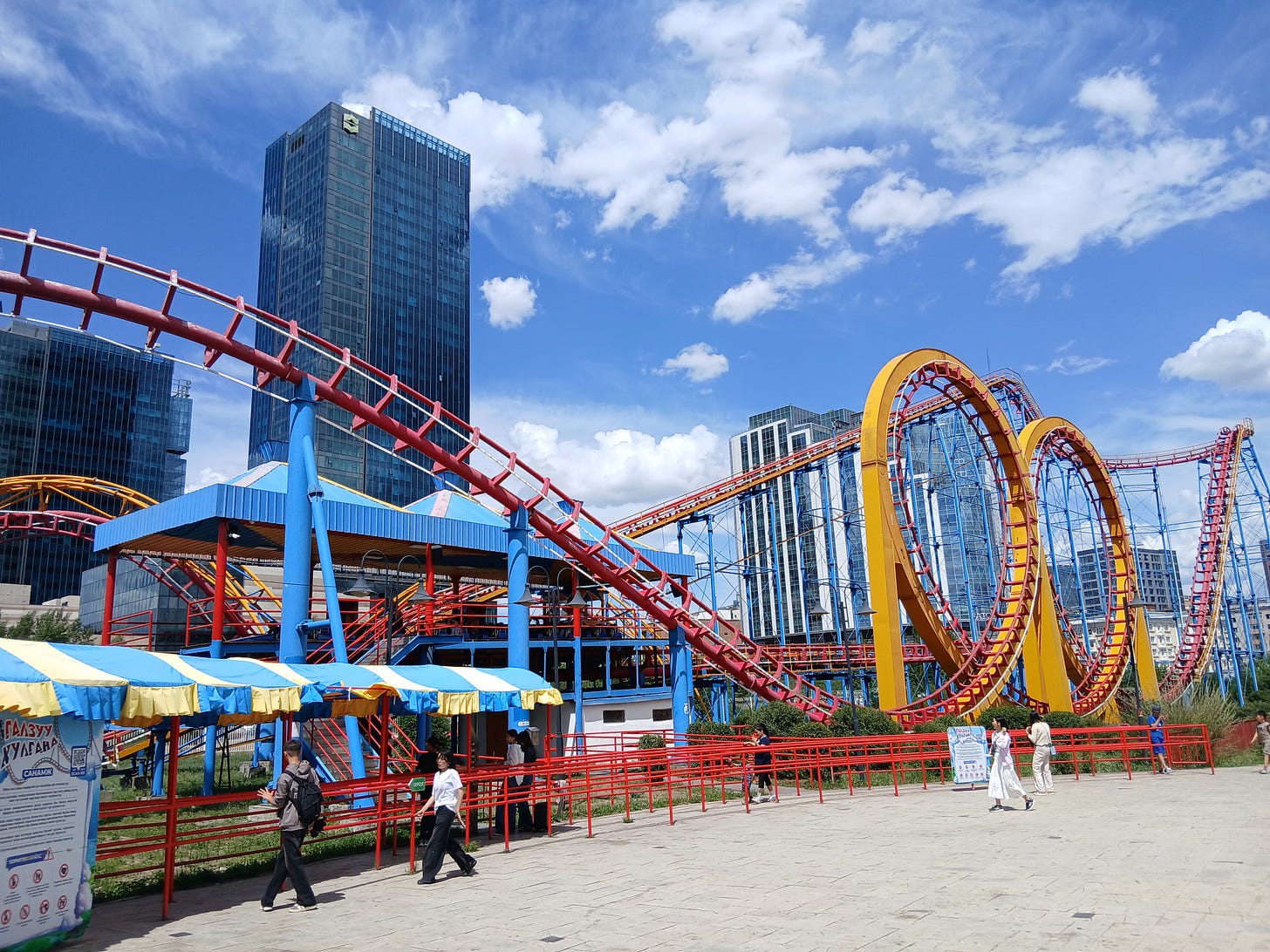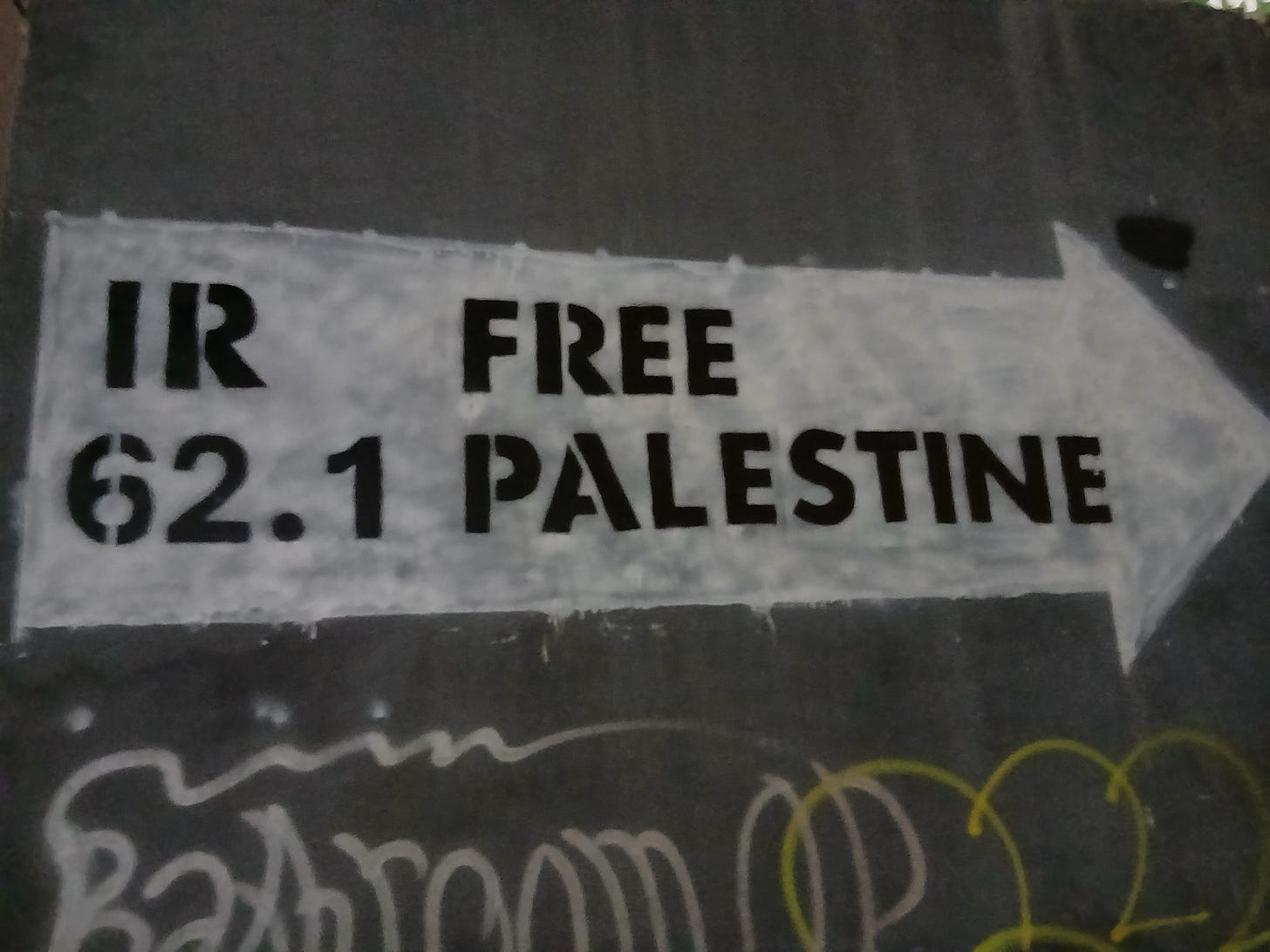(I'm currently traveling in Mongolia until the end of August as a research trip for Bradt Guidebooks. In between the daunting work of documenting a whole country, I'll be sharing my impressions and experiences here. This will be my second Mongolian series, only unlike the first one, written entirely from the road. Cheers!)
The hooks, backbeat, and crunchy riffs of the Beatles' famous rocker (and surely one of the greatest opening tracks of all time) reverberated throughout my dizzy head as we shot across the sky en route to Mongolia, only I had swapped out “USSR” for the name of the country's grungy, but strangely loveable capital city. After all, the syllables fit, and it was also once a grim Soviet outpost, though evidently not important enough to bear mentioning when Sir Paul penned the lyrics to the tune.
Still, Ulaanbaatar — like Phnom Penh, Djibouti, or Tegucigalpa — was one of those impossibly far capitals with exotic-sounding names whose images I attempted to manufacture as a kid while obsessively poring over globes and world maps. After all, the name was all I had to go on, and I never seriously entertainted the possibility of visiting such a place.
Yet here I am, on a return trip to Mongolia's dirty old town.
Both before and during the flight I played a little game with myself: Korean or Mongolian? With other Asians this would have been an easier task, but Mongols and Koreans share 99% of the same DNA, which means they often look identical when it comes to bone structure and the most obvious physical traits.
There are, however, some key differences: Koreans tend to be more stylish, or at least enjoy wearing brand new, immaculate, and outwardly expensive clothes. Mongolians dress more casually (and cheaply). They're also often chunkier and taller than Koreans, whose these days get pretty big in their own right.
Still, nobody in East Asia beats the Mongols when it comes to size. That steady, protein-rich diet of mutton, beef, goat, and hard dairy blast of milk, yogurt, cheese, curds, and thick butter makes for big bones, strong muscles, and a healthy layer of jiggly fat that surely helps them get through one of the harshest winter environments on earth.
Whatever visual differences we can assign to either group, on thing surely sets them apart: babies. South Korea holds the dubious distinction of having the lowest birth rate on earth, and while I don't know Mongolia's numbers, my last visit showed me a country full of squealing children and babies galore. The family unit was everywhere to see.
This was also clearly evident on the plane, where several mothers held and nursed tiny newborn infants, which as become a rarer and rarer sight in the Land of the Morning Calm, especially in public.
The cabin crew of MIAT Airlines — Mongolia's national carrier — was clearly accustomed to dealing with babies during flights, and even kept the first two rows in economy empty, where they set up temporary cribs (first time I'd seen this) where mothers sat down and watched over their sleeping little ones. It was impressive and spoke to just how much Mongolians respect and regard mothers and their babies.
Despite a population of only 3.5 million, Mongolians are certainly being fruitful, though it will take a whole lot more of getting busy to fill up their massive country. Mongolia is the second-largest landlocked country on earth (after Kazakhstan) and most of it is just empty land, which makes it the perfect place for nomads.
Moving large groups of animals place to place has long been the backbone of Mongolian society, though they are now losing this traditional way of life. More and more people in the countryside are folding up their gers (yurts), liquidating their herds, and heading to the big city to make their fortune.
Ulaanbaatar is a loud place, a swirling cacophony of car horns, construction noise, rumbling deisel engines, sputtering motorbikes, and drunks bellowing in the streets at all hours of the night. I write now from the bright and sunny confines of a lovely little apartment that -- from the outside -- looks like it may fall down any day. Most of the older buildings have this scabby, weather-scarred look, which comes from decades of enduring the coldest temperatures of any capital city, not to mention the endless miasma of car and truck fumes and rancid coal smoke, which smothers the city in the winter. They say breathing the UB air at the height of winter is like smoking 6 packs of cigarettes.
The air isn't so bad now, but traffic is the 9th layer of Beezelbub's colon, especially this week, as the capital's Naadam Festival kicks off on Friday. This celebration of the the “3 manly arts" features pageantry, wrestling, archery, horseback riding, and enough vodka to drown St. Petersburg. It's the biggest party of the year (I have a ticket) but it also means that this traffic-choked town becomes mobbed with even more cars.
The river of vehicles along Peace Avenue -- UB's main boulevard -- crawls along a the pace of a sloth on fentanyl, making it much easier to just walk anywhere you need to go. I have been all over the central part of town and back again, loping and crusing along the uneven, ankle-twisting sidewalks while dodging young dudes riding electric scooters -- a recently-developed scourge.
These little sit-down battery-powered motorbikes have sprouted up everywhere like mushrooms after a good rain, and young folks (sometimes children) in particular pilot them with a careless malevolence, weaving in and out of pedestrians and playing games of chicken with each other. They never take to the actual roads because there's no room between the death crush of Prius’, trucks, and buses, and some of these imps take obvious glee in shooting past you as quickly as possible — coming within and inch or two of collision.
If you see a GoFundME in the next few days with my name on it, it will surely be me trying to collect enough cash to pay off the cops after murdering one of these careless little punks.
Lest you think I'm hating on this place right now I'm certainly not, but UB is a city with its own set of challenges. Despite the fact that I'm having the time of my life exploring, eating, drinking, and bopping around from humble guesthouse to luxury hotel to fully-furnisehd apartment (all comped due to the gig), I have to honestly assess this place.
UB is a rough-and-tumble backwater that has recently been givien a makeover due to mining money and last night I wandered its most moneyed blocks, where shiny high-rises made me feel like I could be parts of Denver, Austin, or Seattle. These gleaming buildings are punctuated with bourgie, $20-a-pop cocktail bars full of slim, fashioinble locals, along with cafes, bistros, and even hipster American-style fast food joints, I probably had the best chicken burger of my life last night at a hole-in-the-wall joint that would not have been out of place in the coolest neighborhood in Portland, Oregon. In Ulaan-fucking-baatar. Think about that.
This is the new UB, which is growing each day. That said, just a couple of streets away decaying Soviet apartment bloacks gaze impassionately over the stylish upstarts lke haggard, doughy babushkas who have seen it all but keep plugging along with life (because it's all they know how to do). And on the hills surrounding the city are Mongolia's version of favelas -- the ger districts of dirt roads, clapboard shacks, no plumbing, gargantuan, shaggy dogs, and actual occupied yurts. I explored this part of town on foot during my list visit, which felt not only like a shift in worlds, but perhaps dimensions.
Still, Ulaanbaatar feels vital in a way few cities do anymore -- especially the woefully overpriced and overcooked settlements in the US -- where you either have a six-figure tech job and order Doordash every night or are blazing a meth pipe on the sidewalk. Mongolia is a very young country and constantly in flux, and the capital has an optimistic energy, despite the dust and decay and lingering Soviet grimness.
There is also a fashion-sense amongst many of the younger folks that I find fetching. Half of them seem to be metalheads and goth rockers, with plenty of black leather and band shirts to go with it. The women in particular rock skirts and torn black tights, big boots, eyeliner, and plenty of take-no-shit attitude which is nothing short of cool, While they are often just as beautiful as their Korean counterparts, their more ragged style suggests a toughness, whereas Korean women often self-infantilize to the point of ridiculousness. I can see the spirit of Chinggis Khaan in the eyes of the women here and I count this as a good thing.
English has also caught on in UB in a way that is unexpected. I remember this last time, when the teenage daughter of of our driver's buddy broke out in perfect American English, complete with the undeniable tone of adolescent indifference. I've since heard this all over town -- usually young women speaking Mongolian and then suddenly shifting into not just English -- but flawless conversational American vernacular straight out of sitcom or YouTube video. While some young Koreans learn English well, I've never come across this level of commitment, where friends freely code switch between their native tongue and the global one, just for fun and also surely fashionability.
This tells me that the kids in UB are alright.
Of course I have to reminds myself that I'm in the capital among the nation's elite, and what I experience at a hipster chicken burger joint isn't representative of the nation at large. I'll be heading into the interior soon enough and know from experience that things get rougher (and poorer), fast. Still, I can't help but feel that -- despite its challenges -- that there's an optimism afoot here. And who can blame them? Mongolia is not just a singularly beautiful country, but also a functioning democracy with free speech, a free press, friendly relations with its neighbors and the world, and a growing prosperity that's hard to deny.
In the center of city is a monument of the Beatles, a nod to the impact the Fab Four had on the pro-democracy movement that transformed Mongolia from a Soviet protectorate to a modern, free country. For decades the forbidden music of the Beatles spoke to young Mongolians yearning for freedom, and the statue of the band still stands as a testament to this.
From what I've seen, the youth of Ulaabaatar do indeed feel lucky to be here, at least during Mongolia's idyllic window of summer. I know I do.







Interesting rundown brother...keep em coming.
Keeping an eye out for that GoFundMe...